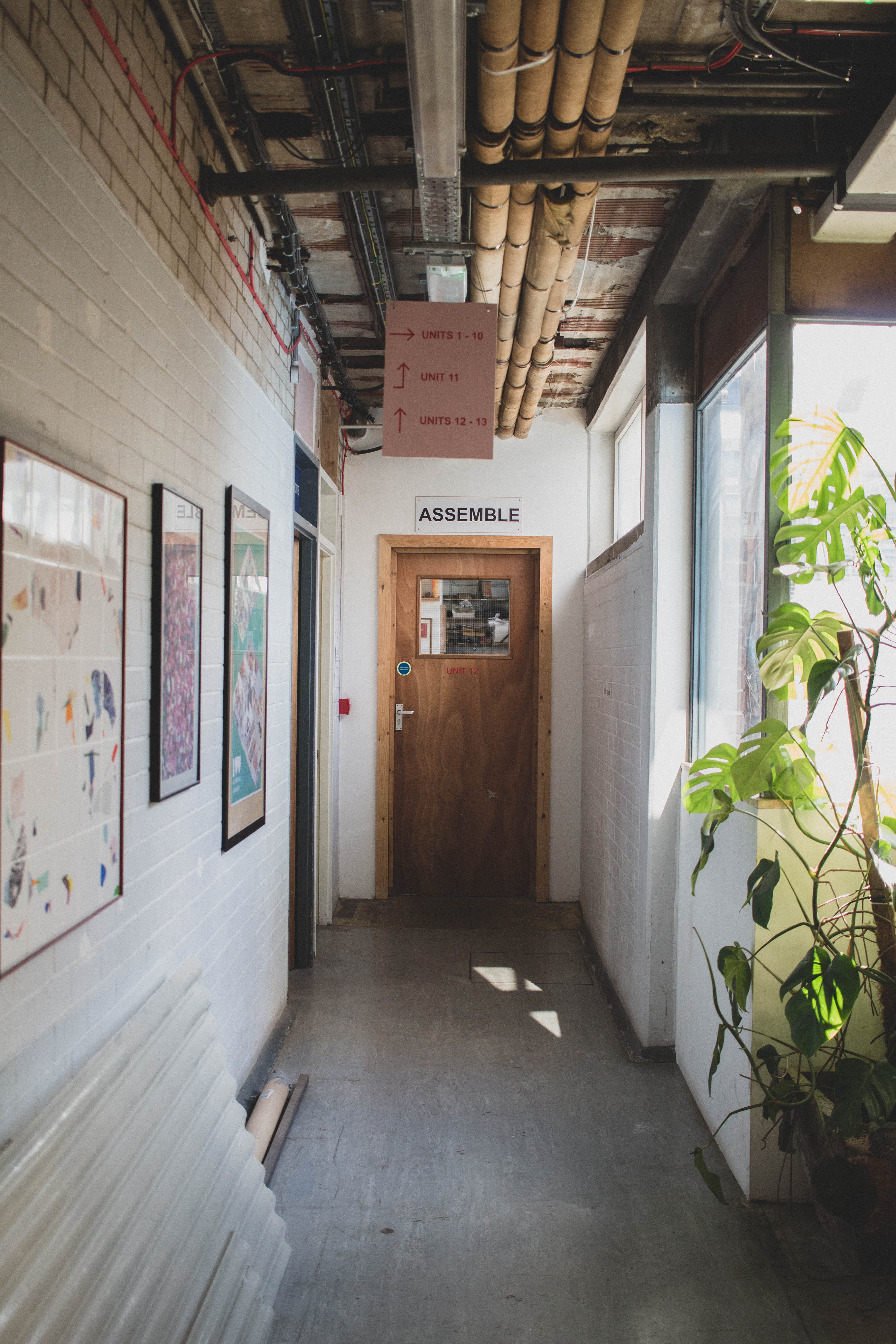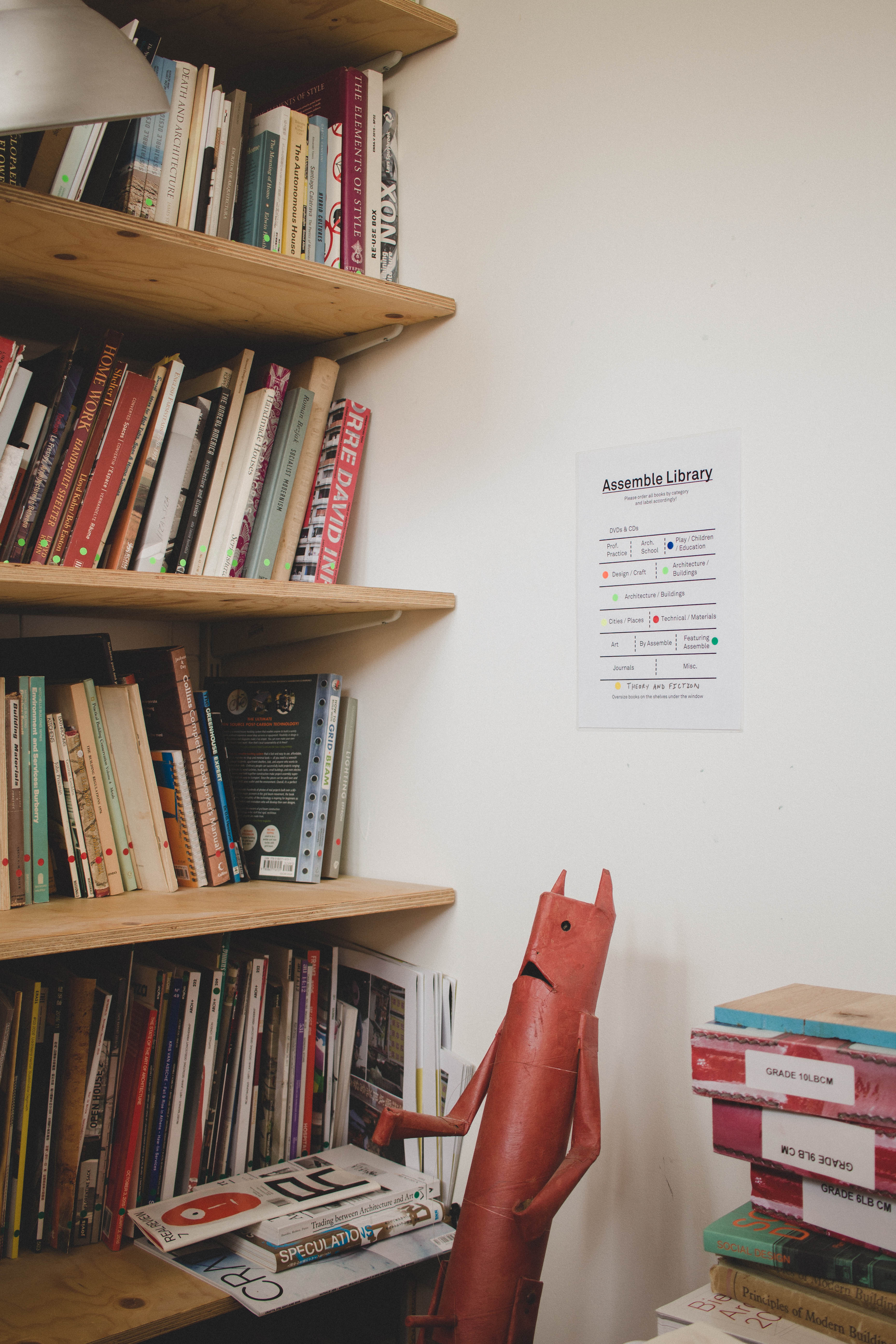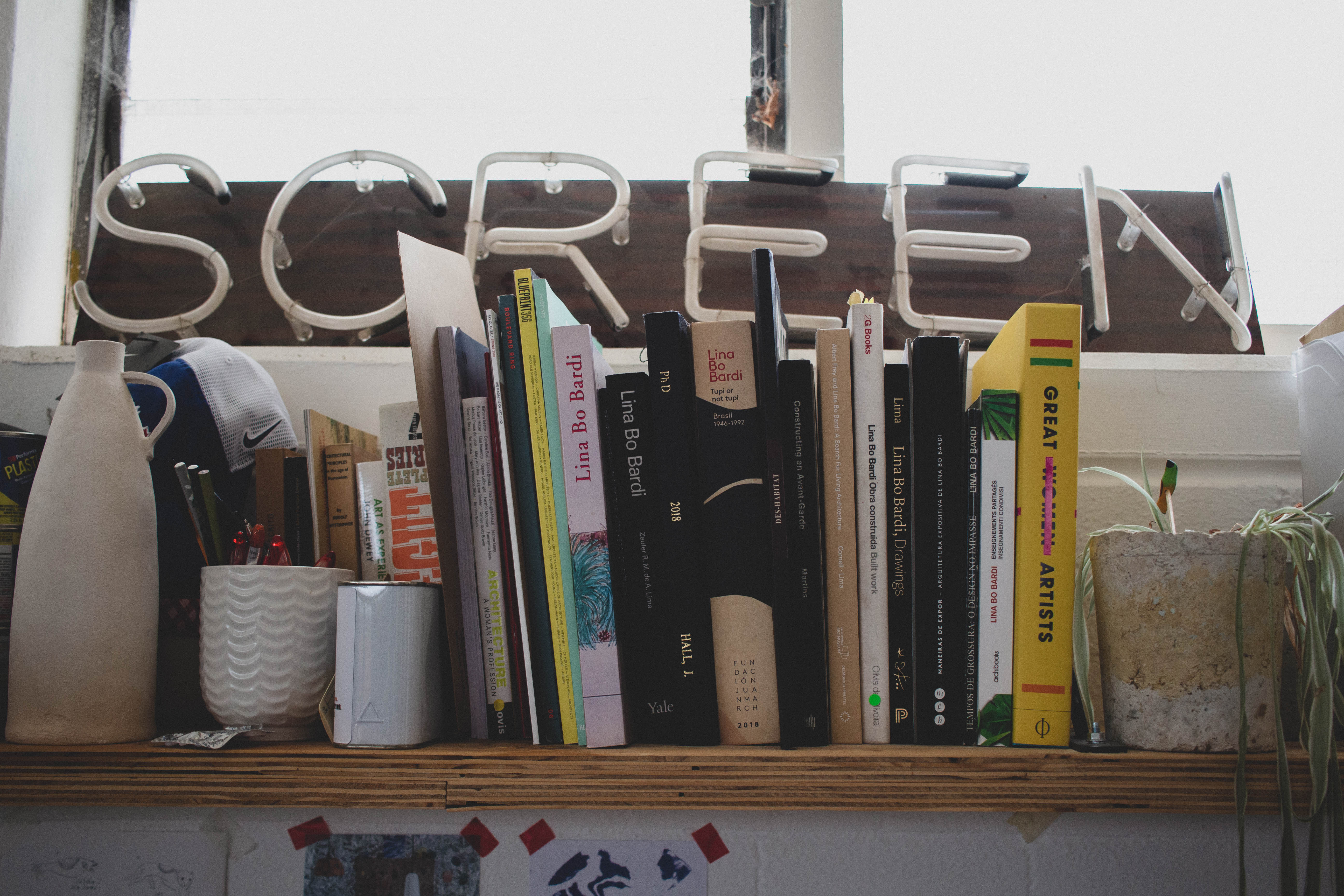3. Assemble
Sugarhouse Studios / 2010 - Present
London - UK
‘Stones against Diamonds’

Next up, we talk to Dr. Jane Hall, a founding member of the multi-disciplinary collective, Assemble. They take on a diverse range of projects, ranging in scale, typology, and form, working across built, social, and research-based work. It seemed only fitting that during our discussion, colleagues James Binning and Amica Dall were both consulted on key texts relative to Assemble, often setting off a discussion about the relevance of the literature to both practice and teaching.
Over the past 10 years, Assemble have created an impressive and diverse body of work. Following self-initiated projects such as The Cineroleum (2010), the practice quickly developed a reputation. In 2015, they became the first architectural practice to be awarded the Turner Prize for their work at Granby Four Streets, an ongoing community project that has helped to rehabilitate a vulnerable part of Liverpool. During this period they formed Granby Workshop and continue to make a wide array of products that are widely available to the public.
After studying architecture at King’s College Cambridge and the Royal College of Art in London, Jane was the inaugural recipient of the British Council’s Lina Bo Bardi Fellowship in 2013. This research formed the basis of her PhD, which focused on new models of practice in Brazil. It compared Bo Bardi’s work in Brazil with that of Alison and Peter Smithson in the UK, addressing the influence of modernism on post-war architecture and the changing role of the architect.
Jane has just completed writing ‘Breaking Ground : Architecture by Women’ (Phaidon, 2019), which features 180 buildings by female architects. The book developed as Jane finished her PhD and became “increasingly frustrated with the lack of intersectional discourse about women in architecture.” Each building is presented individually, with a simple brief - “great works of architecture by women from 1900 to the present day.” It provides a comprehensive framing of women’s role in architectural practice throughout the modernist period. As Jane highlighted in her recent Architecture on Stage talk at the Barbican on ‘Breaking Ground’, hopefully there’s a lot more literature to come. One thing we do know is, expect to see a book about the multi-disciplinary practice soon…

How many books do you currently have in your office?
I’m not sure. About 9 meters of books I’d say. I would expect us to have more. Although there’s probably only about 50% of our books here. People definitely have a lot out ‘in the wild’. We’ve also digitalised a lot of them.

“An open-source application that plugs into any online book seller and catalogues the purchase of the book alongside all of its information. As there are so many of us and we have autonomy over our spending, it stops us accidentally buying books more than once.”
Where do you store them, and how are they organised?
We have a system that we use to divide and label them. Theory and fiction has just been added as a new topic. We also use a programme called Zotero - an open-source application that plugs into any online book seller, for example, amazon, and catalogues the purchase of the book alongside all of its information. You can then organise them online. Everything is catalogued in the library, and on Zotero. As there are so many of us and we have autonomy over our spending, it stops us accidentally buying books more than once. Not all the books end up in the library so it allows us to know if someone already has it. If you can’t find it, then you send the email around…But also if we’re looking at a project we can check the tags, to see what landscape books we have for example. That’s the main tool we use to organise; both analogue and digital literature. However, co-operation can be difficult!
We also now have a shared WhatsApp group for references. So, members of Assemble who are interested in the book world have a separate group to the rest of the Collective. There’s a broad reference of topics shared, it’s not always books.

I also have quite an intense personal library set around my desk. I did my PhD on Lina Bo Bardi so there’s a lot of books on her work - I think that’s about 30% of my collection of books on her. You can usually tell what project people are working on from the books on their desk.

What has been the most influential book throughout your time practicing as an architect?
[James] It’s usually the most recent one I’ve read. Particularly ‘Talking Houses’ - Ten Lectures by Colin Ward at the moment. I’m using it a lot in my teaching. It’s an odd title as it’s more about cities than it is about houses.
[Jane] ‘Stones against Diamonds’ by Lina Bo Bardi is fantastic. It’s about the only piece of writing by her that’s in English. It synthesises most of her ideas in a very simple way - it’s particularly suited to a Western audience. I spent a lot of time during my research in archives deciphering her awful Italian handwriting. My PhD relied heavily on text that was written, normally in letter format, lectures, or as published. During this research I was looking specifically at her work in the 1950s and her work on the Museum of Art in Sao Paolo. She helped with the running of it as an art gallery, whilst acting as Director, and setting up a school…she was an integral part of the institution. Whilst at the museum, she edited a magazine called ‘Des Habitat’. They had a very distinct graphical style. She made 25 issues from the early 50s onwards, publishing the works of people like Oscar Niemeyer and Max Bill. All of the arguments over post-war modernism in Brazil are played out in this magazine. Bo Bardi placed really subversive, provocative imagery in the magazine - often targeting high society who would have an art catalogue of antiquities from north-east brazil. I did a whole chapter in my PhD on the magazine. Paolo Tavares, who is part of Forensic Architecture, has created a contemporary ‘mock-up’ version of Habitat magazine.

“All of the arguments over post-war modernism in Brazil are played out in this magazine. Bo Bardi placed really subversive, provocative imagery in the magazine - often targeting high society who would have an art catalogue of antiquities from north-east brazil.”
[Amica] At the moment, compulsory reading for my students is Bruno Latour, ‘Down to Earth’ and ‘Poverty Safari’ by Darren McGarvey. I think they’re both extraordinarily good books. They’ve both been published in the last year or so though. Maybe ‘Flesh and Stone’ by Richard Sennett. I had a strong section on Sennett but I think I’ve probably ended up giving a lot of it away. A lot of behavioural economics recently. I’ve been fascinated by ‘Scarcity: Why Having Too Little Means So Much’ by Eldar Shafir and Sendhil Mullainathan, which recently won a nobel prize for economics. Elinor Ostrom has been super influential for me. She wrote one classic book called ‘Governing the Commons’, which I think is very important.
How do you work with books? Do you take notes, annotate, read aloud, draw...?
I think we mainly use books as references - I’m definitely an avid notetaker and annotator, which really developed through my PhD as you can imagine. We’re actually working on a book about Assemble at the moment. It’s been interesting to think ‘why would we do that?’ To create an object that people would buy, however cheaply, when we could just publish online. We asked ourselves, how is it different to our website which is a catalogue of our projects - what else can it offer…? It’s also technically 10 years of Assemble so we are also partly doing it for that. We’ve devised a chart, which we will populate, framing the entire book around the theme of collaboration. I held a series of workshops for members of Assemble trying to work out areas of work, or themes, that people keep coming back to - trying to deduce what has developed from our own collaborations. Now we just need to work out how our projects fit into the equation. We’re also working closely with graphic designers based in the building, Stinsensqueeze. They’re helping us to run collaborative workshops. We ran an exercise working with the grid, we made a font…We all eat lunch together so we’ve been running these sessions alongside lunch. I’m sure the graphic designers will take this material somewhere interesting.

“I think we all like books about movements, rather than individual people.”
I asked everyone to bring in precedents of books they liked. It was really interesting, it demonstrated how much variation there is, but also how little people actually think about it. People have a real graphic sensibility but I feel like the way we use books, largely, is to gain information. We read a lot. We rarely use books as visual references. There’s no real picture books here as it’s not something we use. Everything is much more theory or novel based. I think history books are those we use most widely. Online histories can quite often only touch the surface. There’s also a lot of books on making, craft, social, and political ethics of architecture. But we also have the metric handbook. An Ottolenghi book thrown in…I think we all like these kinds of books [Black Mountain College], so about movements rather than individual people. There was a big exhibition in LA about 3/4 years ago. You can get a lot from the texture of the book; some fantastic interviews. The galleries often have money so the writing is incredibly well written. People usually want to take part because they’re high profile.
Where do you find the books you collect?
[Jane] I think predominantly most of the books I find are via recommendations. I find a lot of the books I actually buy are the ones someone has pointed out to me.
[Amica] I read anything I can, particularly The London Review of Books, The New York Review of Books and The Los Angeles Review of Books. I also talk to a lot of people and listen to a lot of lectures. I became obsessed with Frédéric Lordon last year and made a lot of people read his work, ‘Willing Slaves of Capital’.
The breadth of books read in the office is quite wide. Everyone is reading something different. Although there are some references that have been important for all of us. We've learnt a lot from Silvia Federici in terms of our relation to self-organisation and collectivity. How to use these terms to describe something. Although the actual reality of organising can be quite different and have very different implications. Similarly, David Pye and ‘The Nature of Art and Workmanship’ has been important for us as a group. Tim Ingold wrote a fascinating text on the connection between art, anthropology, architecture and archaeology called, ‘Making’.
Although, arguably, different books have informed different parts of the practice. Lady Allen’s ‘Planning for Play’ we read years ago and that had a real influence on our work for children. There’s a lot of different strands. I think the overlap between us is probably only about 10% so there’s a real breadth to the literary references.

“It’s a book that made me feel completely different having read it. It really impacted me. I couldn’t read anything else for a while as it just didn’t feel as important. It has a sense of urgency about it. I find that fascinating.”
If you could re-discover one book, what would it be?
[Jane] When I was at university I always had this sense that Colin Ward was really important to read but I think I was maybe too young to fully appreciate his work. I’d like to proactively read Colin Ward again now.
[Amica] It’s very familiar. It’s quite shocking how much of it now seems so obvious but that’s just because it’s become so engrained in how we live. It now seems very simple but it wasn’t when he was writing it. It’s one of those books that people reference a lot, but often quite reductively or superficially.
[Jane] ‘The Argonauts’ by Maggie Nelson. She’s such a magnificent writer. It’s not architecturally related but it’s a book that made me feel completely different having read it. It really impacted me. I couldn’t read anything else for a while as it just didn’t feel as important. I find that quite often with powerful books. It has a sense of urgency about it. I find that fascinating. Similar to Silvia Federici, who’s a theorist, but her work feels very urgent, there’s a real sense of resolution to her writing.
I also wish I had actually enjoyed Italo Calvino’s ‘Invisible Cities’ like every other architect seems too. I found it really boring. As an architect it’s one of those classics you have on your shelf but I didn’t find it compelling.

“Architecture is a very middle-class profession meaning that architects make decisions based on living in a city that is far from representative. It cracks open in a really informative and digestible way who the city has to work for. It’s earnest and very energetic. Another book of real urgency.”
What book would you recommend every young, aspiring architect to read?
[Amica] I’ve made all of my students read ‘Poverty Safari’. I think it will turn out to be a really, really important book. Arguably the majority of people in most European countries are working class and the majority of architects are very under proportionately represented in terms of viewpoint and narrative. ‘Poverty Safari’ is a fascinating, critical, first-person story about growing up in suburban Glasgow. Architecture is a very middle-class profession meaning that architects make decisions based on living in a city that is far from representative. It cracks open in a really informative and digestible way who the city has to work for. It’s earnest and very energetic. Another book of real urgency.
The other one I make my students read is Thomas Thwaites’, ‘Toaster Project’. It’s brilliant. He wrote it when he was doing his MA and it’s about him making a toaster from scratch. He’s trying to get you to think about the provenance of materials around you and how they’re put together.
[Jane] Barbara Creed’s book ‘Stray: Human-Animal Ethics in the Anthropocene’ has been very important for me. It investigates the stray, both as the animal and as a metaphor to discuss marginalisation. I think as a younger student, especially at A-level you don’t really get encouraged to read theoretical books, there’s a lot of focus on design. ‘Stray’ is placed within a feminist lens, detailing how despite women’s marginalisation, they do have their own architecture and urbanism. It was incredibly useful when I was writing my PhD. It’s only a small book, with really short chapters but as a result it becomes very accessible. It’s a completely ‘other’ way of thinking about cities, space and human relationships.
All photography by Tim Lucas
Website
